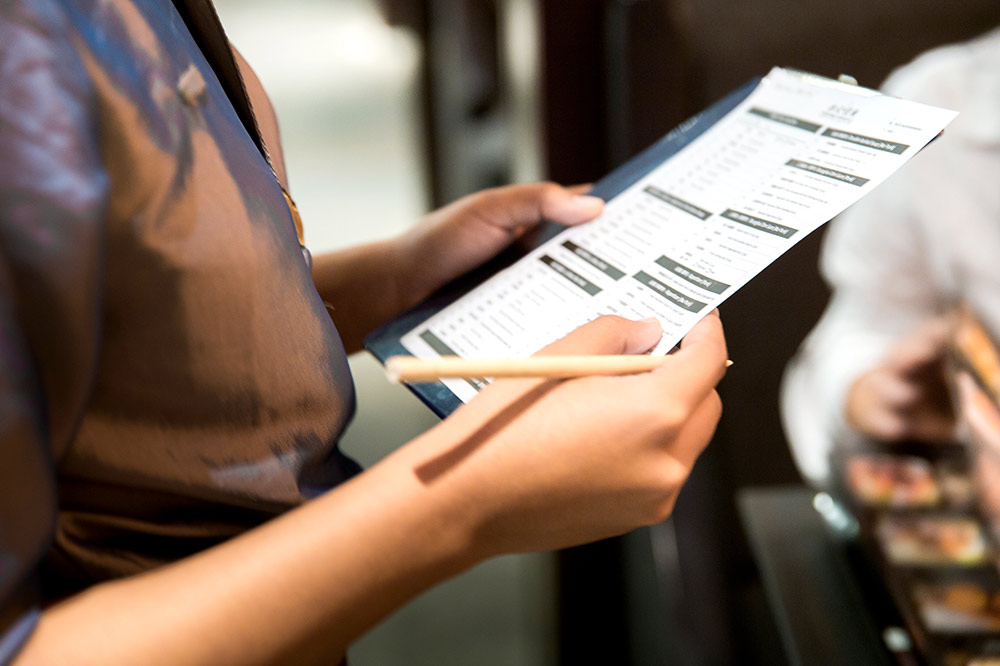Controlling prime costs for your restaurant isn’t just a question of cutting back or even changing what you purchase or do. HOW you acquire your goods and services through your restaurant suppliers can be as important as WHAT those goods and services are.
Ultimately, there are a lot of ways your restaurant suppliers can be raising your prime costs. Much of this is tied into ingredient prices, but it can certainly extend into your inventory and ordering management. Taking time to evaluate if you manage your food, linen, and janitorial suppliers properly can trim down your costs and save you money in the long run.
Check out these seven ways to get a hold on the management of your suppliers.
1. Shop around.
You don’t have to pick the first restaurant supplier you come across. In fact, you shouldn’t! Take some time to really research your supplier options (on reputable sites like the Better Business Bureau, for example) and see what makes the most sense for your business. Don’t be afraid to ask your local restaurant association or even any other restaurant suppliers you’re already partnering with for suggestions and ideas.
Make sure to see not only what they say about themselves on their website, but what their current and former customers say about them. Knowing the restaurant suppliers you choose will meet your needs can help save you money (and hours of frustration) down the line.
Some things to keep in mind:
- Do they have reasonable credit terms?
- Does their delivery schedule fit your needs?
- Are their minimum order amounts lower than what you plan to order for any given shipment?
- Do they have a reputation for late or inaccurate deliveries?
- Are their delivery people helpful and patient as customers inspect their items?

2. Compare local versus bigger broad line distributors.
There are different benefits to suppliers like local farms/manufacturers and nationwide, larger restaurant suppliers. Certain ingredients grown locally could actually have better quality and prices because it doesn’t have to travel as far. There’s also a marketing advantage to being able to advertise that you use local ingredients.
However, if you have to buy certain ingredients in larger volumes (or it’s not grown locally), you might need to order from a larger supplier who can handle that scale of order. But don’t stereotype. Larger suppliers may also have access to the same locally grown food and green staples that a closer supplier features. Broad line distributors also have a certain level of reliability thanks to an established system and the experience of working with so many different restaurants.
No matter what, your restaurant is not going to be able to work with one or the other exclusively, and knowing where you can get the best deal requires smart, detailed research. Don’t short change any distributor — large or small.
3. Be realistic when picking restaurant suppliers.
Come into any negotiations with realistic expectations and promises, and you should expect the same from the supplier. If they’re promising the moon and it seems too good, it probably is.
4. Track with digital apps and software.
Managing your restaurant suppliers means ensuring everything is accurately recorded and your invoices are organized. With technology ever growing, there are dozens of digital apps and software systems specifically designed to help you stay organized with your suppliers. Which one you choose will largely depend on your specific business, so make sure to thoroughly research not just specifications, but also reviews from users in the restaurant industry.
5. Negotiate
You CAN negotiate with your restaurant suppliers, and negotiating doesn’t end with the contract signing.
During every delivery inspection, be prepared to push back on anything that seems off. If an ingredient looks like it’s gone bad or an item is missing altogether, you absolutely need to push back. If you have a good relationship with your restaurant supplier, they would still have your interests at heart and wouldn’t want to leave you with a product that would inhibit your success.
Inquiring about deals from your supplier is part of being a restaurant manager, but you don’t have to take every deal they give you. Getting an item at a discount (or bundled for free with something else you weren’t planning to buy) doesn’t mean it’s always worth it. Never accept anything you don’t need; make sure they’re deals for items you actually want.

6. Building the relationship.
The restaurant/suppliers partnership is just that — a partnership. While you should treat any partnership in your business with scrutiny, there’s no reason for the relationship to be antagonistic.
On the contrary, building the relationship can benefit both parties; you can better negotiate prices together and your supplier can start to learn more about your business, ultimately getting better at making sure they’re suggesting new items for your restaurant that you actually need.
7. Evaluate if you need what you’re buying.
It’s easy to stick with the orders you’re used to. After all, you don’t want to end up needing something and not having it, right? But if you don’t actually need what you’re ordering, then you’re just buying it out of habit and wasting your money.
Some of this pertains to food (do you really need fresh oranges to squeeze into your sauce if you’re already ordering orange juice?), but it also relates to non-food suppliers. Are you buying flowers and candles? Are you renting tablecloths? Not only are these things expensive, but they could also make your restaurant seem dated if you aren’t getting the right products for your niche.
Controlling prime costs isn’t just a supplier exercise. What you do with the inventory after it’s delivered can drive your profits up or down:






